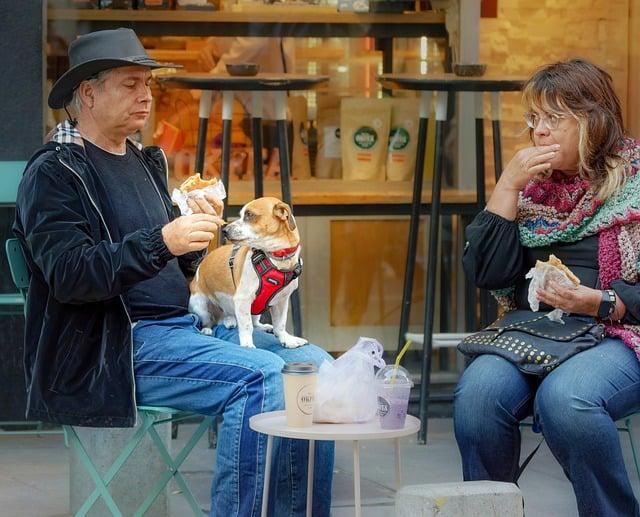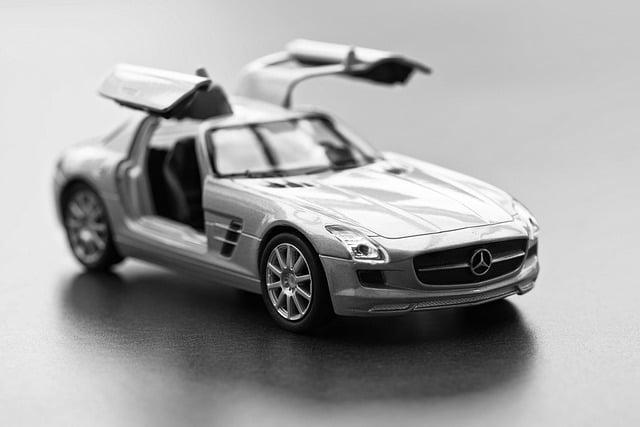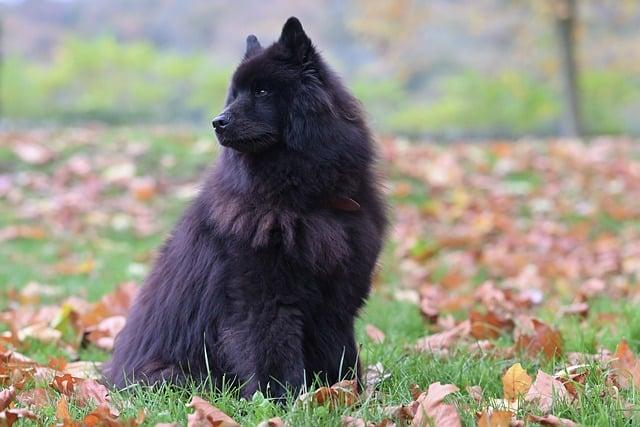In a cozy living room, a golden retriever named Max discovered a plush squeaky toy, a bright red octopus. At first, it was just a plaything, but as days turned into weeks, Max carried it everywhere—on walks, to bed, even during meals. His tail wagged furiously whenever he spotted it, and he would nuzzle it affectionately. This bond was undeniable; Max had fallen in love. Just like humans, dogs can form deep attachments to their toys, showcasing their capacity for love and emotional connection. So, next time you see your pup with their favorite toy, remember: it’s more than just play; it’s love.
Contents
- Understanding the Emotional Connection Between Dogs and Their Toys
- The Science Behind Play: How Toys Stimulate Canine Affection
- Choosing the Right Toys to Foster a Loving Bond with Your Dog
- Enhancing Your Dogs Playtime Experience for Lasting Affection
- Q&A
Understanding the Emotional Connection Between Dogs and Their Toys
Dogs are known for their loyalty and affection, and this bond extends beyond their human companions to their beloved toys. When a dog interacts with a toy, it often goes beyond mere play; it can evoke feelings of comfort, security, and joy. This emotional connection is rooted in the way dogs perceive their toys as companions, providing them with a sense of stability in their environment. The attachment can be so profound that many dogs develop a favorite toy, often carrying it around or seeking it out during stressful situations.
The relationship between dogs and their toys can be likened to that of a child with a cherished stuffed animal. Just as children find solace in their toys, dogs often turn to their favorites for emotional support. This is particularly evident in dogs that experience anxiety or fear. A familiar toy can serve as a source of comfort, helping to alleviate stress and promote a sense of safety. The act of chewing, fetching, or cuddling with a toy can release endorphins, further enhancing the emotional bond and reinforcing the idea that these objects are more than just playthings.
Moreover, the type of toy can significantly influence the emotional connection a dog develops. Toys that mimic prey, such as squeaky toys, can trigger a dog’s natural instincts, leading to excitement and engagement. On the other hand, soft, plush toys often provide a sense of warmth and companionship, making them ideal for snuggling. Dogs may also exhibit protective behaviors towards their toys, showcasing a possessive love that highlights the depth of their attachment. This behavior can be interpreted as a sign of affection, as they treat their toys as valued members of their pack.
Understanding this emotional connection can enhance the way we choose toys for our furry friends. Selecting toys that cater to a dog’s personality and preferences can foster a deeper bond and promote overall well-being. **Interactive toys** that challenge a dog mentally, **durable chew toys** for those with strong jaws, and **comfort toys** for anxious pups can all play a role in enriching a dog’s life. By recognizing the significance of these relationships, we can ensure that our dogs not only enjoy their playtime but also experience the emotional fulfillment that comes from their cherished toys.
The Science Behind Play: How Toys Stimulate Canine Affection
When we observe our dogs engaging with their favorite toys, it’s easy to dismiss it as mere play. However, the reality is that this interaction is deeply rooted in science. Toys serve as more than just entertainment; they are essential tools for emotional and cognitive development. Through play, dogs experience a range of feelings that can mimic the affection they show towards their human companions. This bond is not just a figment of our imagination; it is a genuine connection that can be scientifically explained.
The act of playing with toys stimulates the release of **endorphins** and **dopamine** in a dog’s brain, creating feelings of happiness and satisfaction. These chemicals are often associated with love and bonding, which is why a dog may seem to “fall in love” with a particular toy. The repetitive action of fetching, tugging, or chewing not only provides physical exercise but also reinforces positive emotions. As dogs engage with their toys, they associate these activities with joy, leading to a deeper emotional attachment.
Moreover, toys can serve as a source of comfort for dogs, especially during times of stress or anxiety. A familiar toy can provide a sense of security, much like a child’s favorite blanket. This emotional support is crucial for a dog’s well-being, as it helps them navigate various challenges in their environment. When a dog cuddles or plays with a beloved toy, they are not just having fun; they are also engaging in a form of self-soothing that strengthens their emotional resilience.
the variety of toys available today caters to different preferences and personalities, allowing dogs to express their individuality. From squeaky toys that stimulate their hunting instincts to plush toys that offer comfort, each type plays a role in enhancing a dog’s emotional landscape. By choosing toys that resonate with their unique traits, pet owners can foster a deeper bond between their dogs and their playthings, ultimately enriching the dog’s life and reinforcing the affection they feel towards both toys and their human companions.
Choosing the Right Toys to Foster a Loving Bond with Your Dog
When it comes to deepening the connection between you and your furry friend, the right toys can play a pivotal role. Selecting toys that resonate with your dog’s personality and preferences not only provides entertainment but also fosters a sense of security and love. **Interactive toys**, for instance, can stimulate your dog’s mind and encourage bonding through play. Look for options that challenge their intellect, such as puzzle toys or treat-dispensing gadgets, which can keep them engaged and mentally stimulated.
Another important aspect to consider is the **material and safety** of the toys. Dogs often develop attachments to toys that feel good in their mouths or are made from safe, durable materials. Opt for toys that are non-toxic and designed specifically for your dog’s size and chewing habits. Plush toys can offer comfort and companionship, while rubber toys can withstand vigorous play. By choosing safe and appealing toys, you not only ensure your dog’s well-being but also enhance their emotional connection to their playthings.
Incorporating **fetch and tug-of-war toys** into your playtime routine can also strengthen your bond. These activities promote teamwork and communication, allowing you to engage with your dog in a fun and interactive way. Dogs thrive on social interaction, and playing together can create lasting memories and a sense of trust. Look for toys that are easy to throw, catch, and tug, ensuring that both you and your dog can enjoy the experience together.
Lastly, consider rotating your dog’s toys to keep their interest piqued. Just like humans, dogs can get bored with the same old toys. By introducing new toys periodically or rediscovering old favorites, you can reignite their excitement and affection for their playthings. This simple strategy not only keeps playtime fresh but also reinforces the loving bond you share, as your dog learns to associate joy and comfort with their toys and, by extension, with you.
Enhancing Your Dogs Playtime Experience for Lasting Affection
When it comes to enriching your dog’s playtime, the right toys can transform a simple game into a bonding experience that fosters lasting affection. **Interactive toys** are particularly effective, as they engage your dog’s mind and body, making playtime not just fun but also mentally stimulating. Consider options like puzzle toys that dispense treats, or toys that require your dog to solve a challenge to access a reward. These toys not only keep your dog entertained but also encourage problem-solving skills, enhancing their overall happiness.
Incorporating **variety** into your dog’s toy collection is essential. Dogs, much like humans, can become bored with the same old routine. By rotating toys and introducing new ones regularly, you can keep their interest piqued. Think about different textures, shapes, and sounds that can appeal to your dog’s senses. For instance, rubber toys can be great for chewing, while plush toys can provide comfort. This variety not only keeps playtime exciting but also allows your dog to form unique attachments to different toys, deepening their emotional connection.
Engaging in **interactive play** with your dog using their favorite toys can significantly enhance your bond. Activities like fetch, tug-of-war, or hide-and-seek with toys can create joyful memories and strengthen your relationship. These shared experiences are crucial for building trust and affection. Moreover, the excitement of playtime can lead to increased oxytocin levels in both you and your dog, the hormone associated with love and bonding. Make it a point to dedicate time each day to play together, reinforcing the idea that playtime is a special time for both of you.
Lastly, don’t underestimate the power of **personalization** in your dog’s playtime experience. Dogs often develop preferences for specific toys, and recognizing these favorites can enhance their emotional well-being. Consider customizing toys with your dog’s name or choosing toys that reflect their personality. This attention to detail not only makes playtime more enjoyable but also shows your dog that you understand and care for their unique needs. By creating a tailored play environment, you can foster a sense of security and love that will last a lifetime.
Q&A
-
Do dogs really form attachments to their toys?
Yes, dogs can form strong attachments to their toys. Just like humans, dogs can develop emotional bonds with objects that provide comfort, entertainment, and companionship. A favorite toy can become a source of joy and security for your dog.
-
What signs indicate that a dog loves its toy?
Dogs express their affection for toys in various ways, including:
- Carrying the toy around
- Playing with it frequently
- Bringing it to you for interaction
- Showing excitement when they see it
-
Can a dog experience separation anxiety from a toy?
Absolutely. Dogs can experience separation anxiety when they are away from their favorite toys. This can manifest in behaviors such as whining, searching for the toy, or displaying signs of distress when the toy is out of reach.
-
Should I be concerned if my dog is overly attached to a toy?
While it’s normal for dogs to have favorite toys, excessive attachment can sometimes indicate underlying issues, such as anxiety or boredom. It’s important to provide a variety of toys and engage your dog in different activities to ensure a healthy balance.
while dogs may not experience love in the same way humans do, their strong attachment to toys reflects deep emotional bonds. Understanding this connection can enhance our pets’ happiness and well-being, making playtime even more meaningful.




